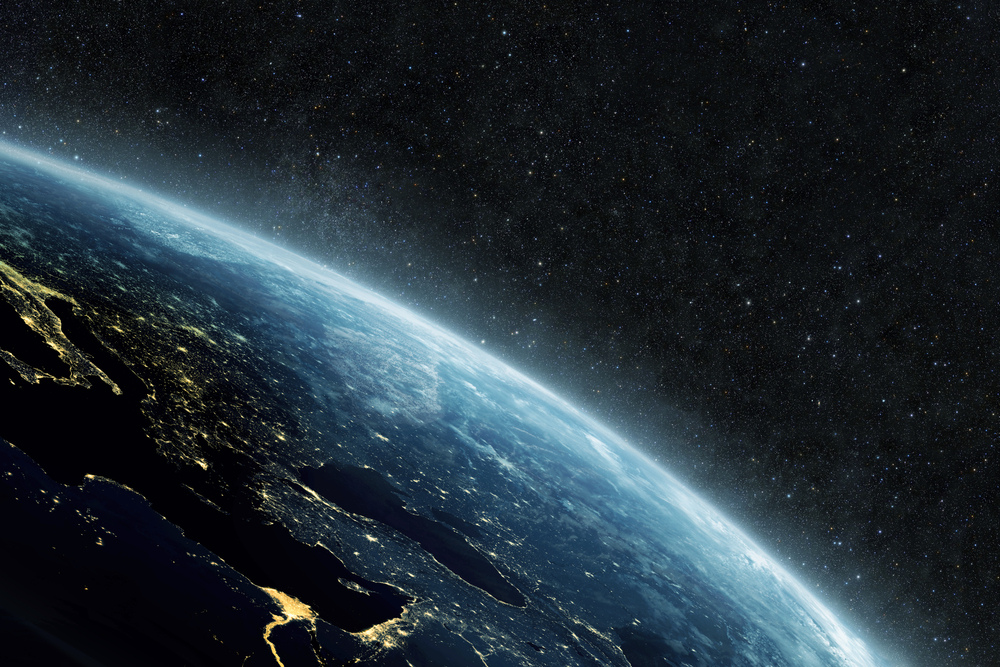
Where Are We Going? Time for Revolution!

By Claire Sagan
Although scientists have been sounding the alarm for us to take action in the face of the climate emergency, power remains in the hands of a few, at the expense of individual, local and solidarity-based action. For Claire Sagan, it is urgent to revolutionize the way we make decisions in order to achieve a common progress – the only desirable horizon when we ask ourselves “where are we going?”.
Where are we going? In a timescape such as ours, when the urgency of multiple, ongoing eco-catastrophes is felt at every second tearing the fabric of time and demanding, simultaneously, that we act fast and that we slow down to think, perhaps a pessimistic answer to this uneasy question is: right into the wall. However, I would like to resist both this pessimism as well as its other facet, optimism, as both commit us to a faith in knowledge about the future. The former envisions a dark future while the latter anticipates a bright one. Both ultimately join in singularizing “the future.” One task in our timescape, then, is to push against this reductive dyad: neither hope nor despair.
Look Up, Watch Out
Let me begin from the recent movie Don’t Look Up!. Upon having been streamed by so many from the confines of our (more or less) safely (surveilled) digitalized homes, this apocalyptic comedy flooded social media in proportions that uncannily echoed the movie’s parody, as it aptly staged the nauseating distraction and relentless narcissistic spectacle of its own not-so-fictional social media sphere.
The film imagines us, here on Earth, condemned to collide with a comet capable of causing Cretaceous-level extinction, as we skitter about in a pointless oscillation between frivolous denial, panicked despair, and reckless hubris. These responses traverse the movie’s various protagonists, replete with truth-telling though sometimes attention-seeking and screen-obsessed scientists, as well as corrupt, neoliberal-to-neofascistic politicians allying with Silicon Valley space-conquering and A.I. cryonization-fantasizing corporate entrepreneurs, who displace sound science and any hope for fair politics with hubristic claims to total control over “saving” of the Earth as they scheme to opportunistically extract the comet’s resources. Too riveted to social media gossip and spectacle to care, the apathetic masses are also too powerless to even begin to act. To the extent that they might contemplate either, the care turns into despair, melancholy and nihilism, while tremors of action take the form of powerless, even supplicating demands pressed upon the powers that be: a comet collision does not leave any room for direct action. Never has dependency on political and economic elites been so acute, leaving human earthlings deeply infantilized: survival in the film hinges upon a tragicomic character invoking the already caricatural likes of Elon Musk, Steve Jobs and Jeff Bezos.
Upon watching, many of us have felt compelled to speculate about what this apocalyptic comedy “truly” allegorizes: “it goes much beyond staging the end of the world, it is about climate change, and the pandemic, and more,” or so went story after story, on and on, on social media.
Earthly Matters, Not in Outer Space
But if Don’t Look Up! now had a strength, I believe it is with what it fails to show, with what is obscured by the vertical incitation to look. In this dark comedy as with Lars Von Trier’s masterpiece tragedy Melancholia, which similarly though more diffusely imagines a twin planet colliding into Earth, and which stages the nihilistic meaninglessness of American bourgeois life, the enemy is outside Earth, making the looming catastrophe also radically out of control, global in an abstracted way. This situation turns out either entirely hopeless or, in the case of Don’t Look Up, may only be responded to thanks to an equally abstract and sweeping, most likely so-called “high”-technological solution, based on a not-so-democratic decision. Through allegory, we are invited to imagine a one-world world, whose trouble can only be addressed by corporate and state elite’s total control and techno-fixing, made up of upward-going, ever-so-phallic, inevitably extractive, rocket ships.
As form, allegory points us to the persistent problem of its gaps, its obscured parts, especially in the urgent, often paralyzing ecological context. If the allegory speaks the unsayable, unnamable reality, if it tells us of denial, paralysis and apathy as well as needed action, end-times and urgency, this staging resides largely in what it fails to represent, what it misses or reduces or even erases. The trouble is not simply that Don’t Look Up!’s denunciation of a distracted, narcissistic, consumerist spectacle society takes the form of humorous entertainment: indeed, the genre-bending prowess performed in putting together an apocalyptic comedy is rather a feat than a limitation. By reducing and outsourcing our many ecological problems to a comet collision, the allegory both distracts us from possible ecological responses to the ongoing catastrophes, and highlights these as its negative space. The resulting suggestive absences evoke the ways in which our ongoing eco-catastrophes are, in short, not one, but many; not total, but complex, partial, and global; not to be addressed in top-down fashion, but in radical, mass mobilization; and, not with expert or political, authoritarian, let alone hubristic measures, but in myriad, fragmented, web-like manners. Our problem is not One, and neither is it in outer space. Instead, our problems call for multiplicities investing the negative space of allegory, on Earth.
Where to, or when and how
Where, then, are we going? Or, if I may reword the question that preoccupies us together here – where and how are we moving about scattered, partly collapsing or partly blooming, hegemonic or alternative, spacetimes? I would suggest that the answer is, indeed, not “up” – as in, going up, or looking up. Neither should a single, abstract, outside, downward-looking God’s eye view of Earth, in the form of various claims to global expertise, guide our meanderings. Neither will the political response to the current eco-destructions be or become one that should be top-down. Although these media behemoths may be helpful, they also symptomatize the very partiality and denialism they attempt to denounce. They may arouse our imaginations to an extent, but we must remain attentive to what they fail to consider, what they reproduce, and what is underscored in abstentia. Don’t Look Up! situates our earthly troubles outside, and from there, it reinstates a radical dependency upon the monopoly of corporate, technological powers equally outside and global in an abstract, levelling, flattening sense. The film’s allegory totalizes what is in fact hegemonic but not total, it singularizes the multiples, and while it may point to the failure of that very totalizing control, it does not display the very real cracks in any totalizing, hegemonic gesture claiming to “save” Gaia, which cracks we may infiltrate much more powerful alternatives.
Together with Whom
So then, to the extent that we may play and replay revolutionarily “together,” I would invite and exhort us to do away with flattening togetherness and universals that would algorithmically include Silicon Valley fantasies (always ripe with masculinism and hubris) of A.I. control, space colonialism, geoengineering, or other such singular technofixing “solutions” to the multiplicitous, complex, not abstract but concrete, not future but very much present, not-so-remote but proximal and intimate, catastrophes. We, the spectacle-bound, confined, supposedly apathetic masses, are arguably, ultimately, less powerless, less inapt, than any grand and singular techno-fixing, which in turn, is bound to fail. The issue is not only a matter of doing away with singularity in a multiplicitous world of many possible worlds, but also a matter of affirming immanence over transcendence and abstraction. Contrary to a comet collision situation, the apocalypse is not coming from above, out there in space, requiring one unified act of “saving.” The collapse, the catastrophe is with us, pushing us into urgency. It is multiple, fragmented, concrete, earthly, tentacular. It invites a matching response in the form of decentralized eco-humility rather than anthropocentric, technocratic hubris.
Dr. Claire Sagan holds a PhD in Political Science along with a Graduate Certificate in Advanced Feminist Studies from the University of Massachusetts, Amherst. She was a Visiting Assistant Professor at Florida International University. She usually teaches courses in Feminist Science and Technology Studies, Political Theory and Gender Studies. She is also working on the overlap of environmental justice and Celtic autonomist movements in Brittany, France.


